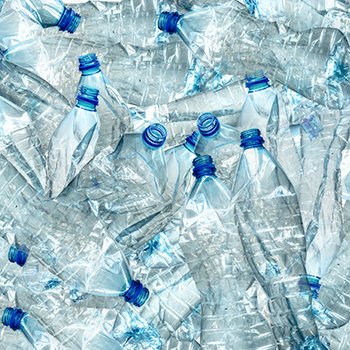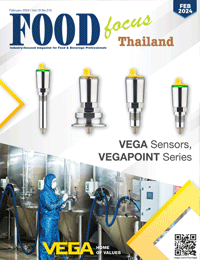แก้โจทย์ขยะพลาสติก ด้วยบรรจุภัณฑ์ยั่งยืนและการจัดการที่เหมาะสม Solving Plastic Wastes with Sustainable Packaging and Proper Management
1706 Views |

By: ดร. พิสุทธิ์ เลิศวิไล
Pisuth Lertvilai, Ph.D.
Deputy Managing Director
Multibax Public Co., Ltd.
Pisuth.lertvilai@multibax.com
ด้วยคุณสมบัติที่หลากหลายจึงกลายเป็นบรรจุภัณฑ์ที่ได้รับความนิยม
1. คุณสมบัติทางด้านกายภาพสำหรับการใช้งาน (Mechanical properties) เมื่อเปรียบเทียบกับบรรจุภัณฑ์ประเภทอื่น พลาสติกถือเป็นวัสดุที่มีน้ำหนักเบากว่าแต่สามารถรับน้ำหนักได้ดี
2. การมีต้นทุนที่ต่ำกว่า
3. ความปลอดภัยในการใช้งาน โดยพลาสติกที่ใช้เป็นบรรจุภัณฑ์สัมผัสอาหารนั้นจะต้องผ่านการทดสอบในด้านต่างๆ ที่เกี่ยวข้อง รวมถึงทดสอบการแพร่กระจายของสารที่เป็นส่วนประกอบของบรรจุภัณฑ์ลงสู่อาหาร (Migration test)
4. คุณสมบัติในการนำกลับมาใช้ซ้ำ และนำมาขึ้นรูปใหม่ได้ (Reuse & Recycle)
ด้วยคุณสมบัติทั้ง 4 ข้อข้างต้น สามารถกล่าวได้ว่า แม้พลาสติกจะก่อให้เกิดปัญหาต่อสภาพแวดล้อมอย่างเห็นได้ชัดในปัจจุบันจนมีข้อคิดเห็นบางส่วนว่าควรเลิกใช้พลาสติก แต่ในความเป็นจริงแล้วเราจะสามารถยกเลิกการใช้งานพลาสติกได้ก็ต่อเมื่อสามารถหาวัสดุทดแทนที่มีคุณสมบัติในการใช้งานครบทั้ง 4 ข้อได้ อย่างไรก็ตาม การหาวัสดุทดแทนพลาสติกตามคุณสมบัติในด้านต่างๆ ซึ่งก็ยังเป็นเรื่องที่ท้าทายในการวิจัยและพัฒนาในระยะเวลาอันใกล้นี้
แก้ไขปัญหาด้วยการจัดการที่เหมาะสม
1. การฝังกลบหรือฝังใต้พื้นดิน เป็นวิธีที่ใช้กับการจัดการของเสียที่ไม่สามารถจัดการด้วยวิธีอื่นได้แล้ว
2. การจัดการเฉพาะขยะอินทรีย์ โดยวิธีการหมักเพื่อแปลงเป็นปุ๋ยอินทรีย์สำหรับใช้ในการบำรุงพันธุ์พืชต่างๆ ต่อไป
3. การคัดแยกประเภทขยะและของเสียต่างๆ เช่น พลาสติก กระดาษ หรือโลหะ แล้วนำวัสดุแต่ละประเภทกลับมาใช้ซ้ำหรือแปรรูปเพื่อนำกลับมาใช้ใหม่ให้เหมาะสม
4. การเผาในเตาระบบปิดโดยใช้ความร้อนสูง (Incineration) ซึ่งสามารถนำมาผลิตเป็นไฟฟ้าจากการเผาขยะเหล่านี้ ปัจจุบันเป็นทางเลือกที่ได้รับความนิยมเพิ่มขึ้นอย่างต่อเนื่องในหลายประเทศเพราะอาจเป็นวิธีการที่ดีที่สุดในการจัดการขยะประเภทต่างๆ รวมถึงพลาสติก
นวัตกรรมพลาสติกรักษ์โลก
1. พลาสติกชีวภาพ (Bioplastics) ซึ่งสามารถแบ่งได้เป็นสองกลุ่ม คือ
· พลาสติกชีวภาพชนิดย่อยสลายได้ (Compostable bioplastics)
· พลาสติกชีวภาพชนิดฐานชีวภาพ (Biobased bioplastics)
2. พลาสติกที่ผ่านการใช้งานจากผู้บริโภคมาแล้วและนำกลับมาใช้ใหม่ เพื่อลดการใช้พลาสติกใหม่ในปัจจุบัน ซึ่งแบ่งออกได้เป็นอย่างน้อย 2 กลุ่ม เช่น
· พลาสติกที่เก็บขึ้นมาจากทะเล มหาสมุทร หรือชายฝั่ง เรียกโดยรวมว่าพลาสติกที่มีอยู่ในบริเวณมหาสมุทรและชายฝั่ง (Ocean bound plastics)
· พลาสติกที่ผ่านการใช้งานจากผู้บริโภคมาแล้วและนำกลับมาใช้ใหม่ (Post Consumer Recycled Plastic; PCR) ที่มีกระบวนการจัดเก็บ ทำความสะอาด และนำมาอัดรีด เพื่อให้เป็นเม็ดพลาสติกก่อนนำกลับมาใช้ใหม่ นั่นก็คือ Global Recycled Standard (GRS)
From Various Properties to Well Known Packaging
1. Mechanical properties Comparatively, plastics are the lighter-weight packaging material but can hold a much heavier weight.
2. Lower cost
3. Safety concerns In this regard, plastics that are used as food contact packaging must pass all the relevant tests, including the migration test.
4. Reused and Recycled properties
With all these 4 outstanding properties, it can be concluded that even plastics are the main culprit for a friendly global environment and plastics should be completely banned; however, we can stop using plastics at any time should we have alternative materials that can be utilized comparably with plastics but must possess these 4 good properties. As such, within this decade, it is highly challenging for scientists to research and innovate such a material.
Implementing the Proper Management to the Solve Problem
1. Landfill or burying waste under the ground although it is getting less popular but, is still used for the very few selected items that cannot be handled by any other ways.
2. Separating all organic wastes and then the fermentation process turns them into organic fertilizer for enhancing the plant's growth.
3. Separating various wastes such as by type of plastics, papers, or metals, then reuse or recycle each type of material properly.
4. Incineration is burning the waste in the closed system under high temperature, and then turning this waste to electricity. This alternative is now getting more popular in many countries as it seems to be the best way to manage various kinds of waste including plastics.
Innovative Green Plastics
1. Bioplastics, where it comprises of 2 groups as follows:
· Compostable bioplastics
· Biobased bioplastics
2. Post-consumer recycled plastics (PCR), comprising at least 2 groups as follows:
· Plastics that are retrieved from the ocean and nearby areas, collectively called Ocean bound plastics
· Plastics that are once being used by the consumer and then are properly managed, called post-consumer recycled plastics (PCR).






